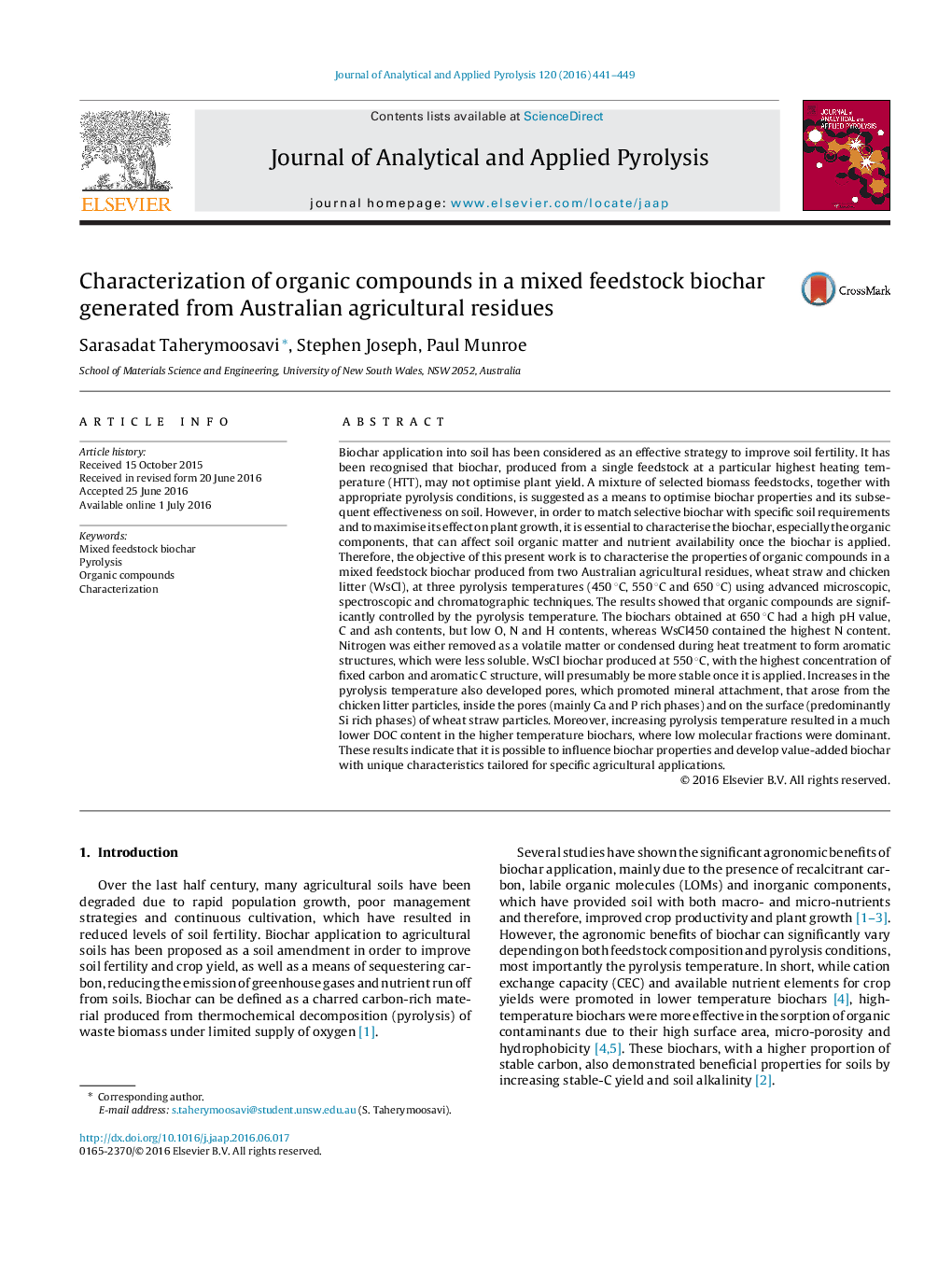| کد مقاله | کد نشریه | سال انتشار | مقاله انگلیسی | نسخه تمام متن |
|---|---|---|---|---|
| 1196572 | 1492957 | 2016 | 9 صفحه PDF | دانلود رایگان |
• Mixed-feedstock-biochars based on wheat straw and chicken litter were investigated.
• Increases in temperature promote interactions between C-rich and mineral phases.
• Biochar produced at 550 °C contains the highest aromatic C structures.
• To preserve N content, biochars should be produced at lower temperatures (<550 °C).
• Pyrolysis temperature decreases the concentration of dissolved organic carbon.
Biochar application into soil has been considered as an effective strategy to improve soil fertility. It has been recognised that biochar, produced from a single feedstock at a particular highest heating temperature (HTT), may not optimise plant yield. A mixture of selected biomass feedstocks, together with appropriate pyrolysis conditions, is suggested as a means to optimise biochar properties and its subsequent effectiveness on soil. However, in order to match selective biochar with specific soil requirements and to maximise its effect on plant growth, it is essential to characterise the biochar, especially the organic components, that can affect soil organic matter and nutrient availability once the biochar is applied. Therefore, the objective of this present work is to characterise the properties of organic compounds in a mixed feedstock biochar produced from two Australian agricultural residues, wheat straw and chicken litter (WsCl), at three pyrolysis temperatures (450 °C, 550 °C and 650 °C) using advanced microscopic, spectroscopic and chromatographic techniques. The results showed that organic compounds are significantly controlled by the pyrolysis temperature. The biochars obtained at 650 °C had a high pH value, C and ash contents, but low O, N and H contents, whereas WsCl450 contained the highest N content. Nitrogen was either removed as a volatile matter or condensed during heat treatment to form aromatic structures, which were less soluble. WsCl biochar produced at 550 °C, with the highest concentration of fixed carbon and aromatic C structure, will presumably be more stable once it is applied. Increases in the pyrolysis temperature also developed pores, which promoted mineral attachment, that arose from the chicken litter particles, inside the pores (mainly Ca and P rich phases) and on the surface (predominantly Si rich phases) of wheat straw particles. Moreover, increasing pyrolysis temperature resulted in a much lower DOC content in the higher temperature biochars, where low molecular fractions were dominant. These results indicate that it is possible to influence biochar properties and develop value-added biochar with unique characteristics tailored for specific agricultural applications.
Journal: Journal of Analytical and Applied Pyrolysis - Volume 120, July 2016, Pages 441–449
